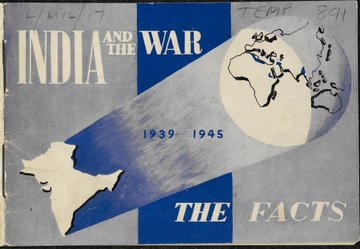
World Wars
In both World Wars, South Asians played major roles as soldiers, merchant mariners keeping supply lines open and in Civil Defence in Britain’s war effort on the Home Front, in Europe, Africa and the Middle East as well as South East Asia and the Pacific
Overview
With the outbreak of the First World War in 1914, Britain was in desperate need of manpower and called on its imperial troops to support its war effort, with the first Indian troops from the Lahore and Meerut Divisions and the Secunderbad Cavalry arriving in Marseilles in September 1914. They saw action on the Western Front during 1914/15 at Ypres, Neuve Chapelle and Loos. They also fought in great numbers in East Africa and the Middle East. By 1918 India had sent over 1 million soldiers to fight in the war, not including Imperial Service Troops from the princely states, sailors and the Indian Labour Corps. 138,608 Indian soldiers (two infantry divisions, two cavalry divisions and four field artillery brigades) saw action on the Western Front, where 7,700 Indians died, 16,400 were wounded and 840 went missing or were taken prisoner. Of the twelve Victoria Crosses awarded to Indians after the war, six were for those who had fought on the Western Front. The main memorial to the Indian Army on the Western Front opened in 1927 at Neuve Chapelle. Two memorials exist in Brighton to commemorate the Indian soldiers sent to recover in hospital during the war – the Chattri on the South Downs and the Pavilion Gateway.
In the Second World War (1939–45) India was called on again to provide manpower, equipment and auxiliary support for Britain’s war effort throughout the world. South Asians’ contribution was essential to keep the supply lines to Britain open and to defend borders at home and in the empire. Force K6 provided vital backup to the British Expeditionary Force in France in 1940, with animal transport companies evacuated at Dunkirk. They were stationed in Britain until 1944. South Asians in Britain, like Chuni Lal Katial, worked as Air Raid Precautions Wardens in Civil Defence. Twenty-four Indian pilots, such as Mahinder Singh Pujji, joined the RAF and flew bombers and fighter planes, responding to the Royal Air Force’s shortage of pilots. By the end of the Second World War, over 17,500 men and women from the Commonwealth had been recruited. A further 25,000 served in the Royal Indian Air Force. Indian factories maintained a regular supply of vital war materials to the Allied forces. South Asian merchant seamen kept supply lines to Britain open, providing vital manpower, often working under arduous conditions for less pay than their white counterparts.
The British Indian Army played a major role in the operations in Italy, the Mediterranean, the Middle East, East Africa and South East Asia. The Fourteenth Army in Burma was the largest single army in the world with 1 million men, of whom 700,000 were South Asian.
Another interesting thing
During the Second World War, the UK-based Indian Comforts Fund became next-of-kin to all Indian prisoners of war interned in Europe. The organization co-ordinated the packing of over 1.5 million food parcels and worked together with the Indian POW reception unit in the UK. The Fund made provisions for entertainments for Indian troops in Britain, supplying gramophone records, books and sports equipment. The Fund also provided financial assistance to the large number of Indian seamen arriving at British ports and by 1943 had mobilized around 100,000 knitters, providing woollen clothing for Indian POWs, merchant seamen and others.
Browse this theme
Image credit
IOR/L/MIL/17/5/4263: India and the War, 1939-45. The facts. India Office Information Dept, Jan 1946. Courtesy of British Library Board
